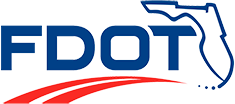Coastal Link Study
The Coastal Link study proposed to reintroduce commuter passenger service along an 85-mile stretch of the Florida East Coast (FEC) Railway corridor between downtown Miami and Jupiter. Such service will connect the hearts of densely populated municipalities in eastern Miami-Dade, Broward and Palm Beach Counties. It will improve north-south mobility, encourage stronger east-west connections, promote redevelopment and revitalization, and enhance freight movement. Reinstating passenger service in the FEC corridor will provide an efficient option to driving on congested streets and highways and a much-needed integrated transportation link essential for smart growth management, sustainability and a vital economy.
This corridor will serve as the spine of a regional intermodal network, connecting to the existing bus systems and rail transit systems including both Tri-Rail and Metrorail. It will integrate with the various transit systems including the new City of Miami Trolley, and the proposed Central Broward East-West Connection. It links to the three major airports, Miami International, Fort Lauderdale-Hollywood International and Palm Beach International; the four regional airports within the tri-county area; and to the region's seaports, PortMiami, Port Everglades and Port of Palm Beach.
Benefits of this project include expanded freight capacity; reliable travel time savings; improved service for the transit dependent population; enhanced intermodal connectivity for riders; improvements in land use; sustainability; more job opportunities; and an enhanced quality of life for South Florida's current and future residents and visitors.
Once fully implemented, the Coastal Link has the potential to generate tens of thousands of jobs and billions in short- and long-term economic impacts through construction, operations, maintenance and Transit Oriented Development (TOD). As in other areas around the country, TOD realized over time will expand the regional tax base and contribute to the financial stability of communities along the corridor.

